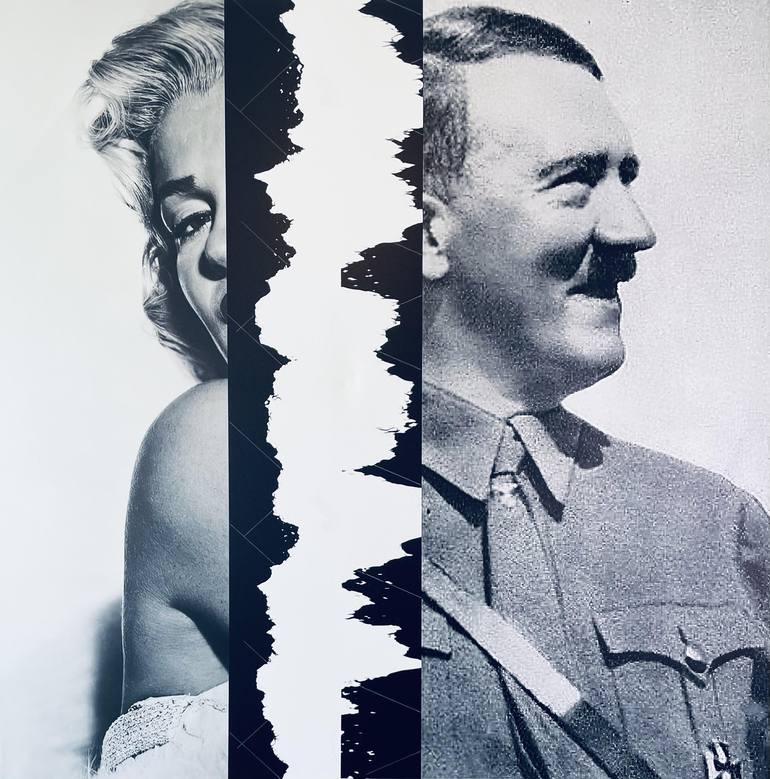


25 Views
0
View In My Room
ABOUT THE ARTWORK
DETAILS AND DIMENSIONS
SHIPPING AND RETURNS
The juniper tree I grew up in the late part of the postwar. Born in 1961, the Cold War surrounded me in my youth, and there were echoes of World War II throughout U.S. society. I’d started calling myself an artist when I was four, and aesthetics became my primary interest. I also loved playing...
Year Created:
2023
Subject:
Mediums:
Digital, Digital on Canvas
Rarity:
One-of-a-kind Artwork
Size:
167.6 W x 167.6 H x 5.1 D cm
Ready to Hang:
Yes
Frame:
Not Framed
Authenticity:
Certificate is Included
Packaging:
Ships in a Crate
Delivery Cost:
Shipping is included in price.
Delivery Time:
Typically 5-7 business days for domestic shipments, 10-14 business days for international shipments.
Returns:
14-day return policy. Visit our help section for more information.
Handling:
Ships in a wooden crate for additional protection of heavy or oversized artworks. Artists are responsible for packaging and adhering to Saatchi Art’s packaging guidelines.
Ships From:
United States.
Need more information?
Need more information?
Eric Shaw
United States
I decided I’d be an artist when I was four. In grade school, I drew constantly, and, in high school, I had a special relationship with my art teacher, spending weekends with him and accepting special projects that came with pay. In college, I painted with some focus at Willamette University, then finished my BA at the University of California, Santa Cruz. (A number of my college paintings were stolen, and that flattered.) I went on to do a 5th Year Graduate Certificate at UCSC. I had a host of potent teachers in those years—Robert Hess, Hardy Hanson, Patrick Ahearn, and Eduardo Carrillo, among them. While at UC Santa Cruz, I spent a summer working as a somewhat-confused boy-Friday for the art historian, Nan Rosenthal, in New York—who’d undertaken a monograph on Robert Rauschenberg. While claiming her drycleaning, repainting her table-lamps, and visiting Rberg’s studio, I was deeply influenced by the artist’s work, and that of his foil, Jasper Johns. Nan stuck our noses deep into both artists’ careers as we studied with her. My BA focused drawing and painting. My 5th Year Certificate concerned itself with painting and printmaking (the school had no MFA). I spent the next two years painting canvases, while painting houses with a very hip--but equally lazy--buddy and working as a TA for UCSC art history classes. I had one-man shows in Santa Cruz, and further ones in Oregon, Minnesota, and New Mexico—working both abstractly and figuratively in those years (painting a cache of 60s family photographs at one point). I focused on color, tone, and found imagery. In the 90s, I completed two master’s degrees (in Education and Religious Studies) and taught art and performance in inner city Minneapolis for two different museums (then taught Special Ed. on the Navajo Res in New Mexico from 1994-98). At decade’s end, I got engaged to someone even more troubled than me, then got back to Portland to do four years of adjunct teaching. I had a regular gig in art history at Clark College, and did minor work at Oregon College of Art and Craft, too. In the new millennium, I let go of painting and my fiancé. Remaining in Portland, I undertook performance art from 2000-04 in the scene around Linda Austin’s PerformanceWorks Northwest. I did dancey and athletic one-man and collaborative pieces, chatting with inanimate objects and the crowd. I studied and taught aesthetically-informed styles of yoga.
Artist Recognition

Artist featured by Saatchi Art in a collection
Why Saatchi Art?
Thousands of
5-Star Reviews
We deliver world-class customer service to all of our art buyers.
Global Selection of Original Art
Explore an unparalleled artwork selection from around the world.
Satisfaction Guaranteed
Our 14-day satisfaction guarantee allows you to buy with confidence.
Support Emerging Artists
We pay our artists more on every sale than other galleries.
